Slight increase of 500 VND
Pepper price today December 7, 2025: Domestic pepper price increased slightly by 500 VND, bringing the price to 149,000 VND/kg. Pepper exports in November continued to increase for the 4th consecutive month.
Domestic pepper price today December 7, 2025
Specifically, Dak Lak pepper price was purchased at 149,000 VND/kg, a slight increase of 500 VND/kg compared to yesterday. Chu Se pepper price (Gia Lai) was purchased at 147,500 VND/kg, an increase of 500 VND/kg compared to yesterday. Dak Nong pepper price today was recorded at 149,000 VND/kg, an increase of 500 VND/kg compared to yesterday.
In the Southeast region, pepper price in Ba Ria - Vung Tau is currently at 147,500 VND/kg, unchanged from yesterday; in Binh Phuoc, pepper price today is at 148,000 VND/kg, up 500 VND/kg from yesterday.
| Province (survey area) | Purchase price (Unit: VND/kg) | Change (Unit: VND/kg) |
| Dak Lak | 149,000 | +500 |
| Gia Lai | 147,500 | +500 |
| Dak Nong | 149,000 | +500 |
| Ba Ria - Vung Tau | 147,500 | - |
| Binh Phuoc | 148,000 | +500 |
| Dong Nai | 147,500 | - |
Pepper prices today, November 30, 2025, closed the week with a sharp decrease of 2,000 to 3,000 VND/kg. Specifically, Gia Lai pepper prices recorded the sharpest decrease of 3,000 VND/kg compared to last week. In Dak Lak and Dak Nong, pepper prices decreased by 2,000 VND/kg compared to last week.
In the Southeast region, pepper prices in Ba Ria - Vung Tau and Dong Nai decreased by 2,500 VND/kg compared to last week. Pepper prices in Binh Phuoc decreased by 2,000 VND/kg compared to last week.
Vietnam’s pepper has the opportunity to set a new export record as pepper prices increase sharply in the international market. Global supply is decreasing, but demand remains high, pushing prices to attractive levels, helping pepper continue to maintain its position as “black gold” among agricultural exports.
Many farmers have switched to growing coffee and durian during the period of low pepper prices, causing supply to shrink. This decline has inadvertently created momentum for pepper prices to increase in the market, helping to significantly improve export value.
Experts predict the price increase cycle could last more than 10 years. Next year, domestic pepper prices are expected to reach VND200,000/kg thanks to strong momentum from the export market and continued supply contraction.
In the short term, pepper prices are likely to remain above VND148,000/kg. If floods and rains continue to slow down the harvest, prices may even reach a new high, creating more opportunities for pepper growers in the final stages of the season.

World pepper prices today
Update on world pepper prices from the International Pepper Association (IPC), at the end of the most recent trading session, IPC listed the price of Indonesian Lampung black pepper at 6,995 USD/ton, and the price of Muntok white pepper at 9,643 USD/ton.
The price of Brazilian ASTA 570 black pepper is at USD 6,150/ton. The price of Malaysian ASTA black pepper is at USD 9,000/ton; the price of this country's ASTA white pepper is at USD 12,000/ton.
Today, Vietnam black pepper price is traded at 6,500 USD/ton for 500 g/l; 550 g/l at 6,700 USD/ton; white pepper price at 9,250 USD/ton.
By the end of November 2025, pepper prices in the export market continued to maintain an upward trend when the total turnover reached nearly 1.52 billion USD. Although output decreased by 4.4% compared to the same period in 2024, export value increased by 24.4% thanks to the sharp increase in black and white pepper prices. The 7.7% decrease in output compared to 2023 did not reduce the attractiveness of this item.
In 11 months, the average export price of black pepper reached 6,618 USD/ton and white pepper reached 8,636 USD/ton. These two prices increased by 1,767 USD and 2,175 USD respectively compared to the same period in 2024, helping Vietnam's pepper export price maintain a highly competitive position in the world market.
Many key export enterprises such as Olam Vietnam, Nedspice, Phuc Sinh or Simexco Dak Lak are maintaining stable output, contributing to maintaining the supply rhythm for the market. Although some enterprises have reduced output, others have increased, creating a balanced picture for exports and supporting pepper prices from fluctuating strongly.
The US remains the largest consumer market but imports have decreased by 28%. In return, demand from the UAE, China and India has increased sharply, especially China, which increased by 83.7%. The expansion from emerging markets has helped pepper prices maintain a positive trend and created stable expectations for the following months.

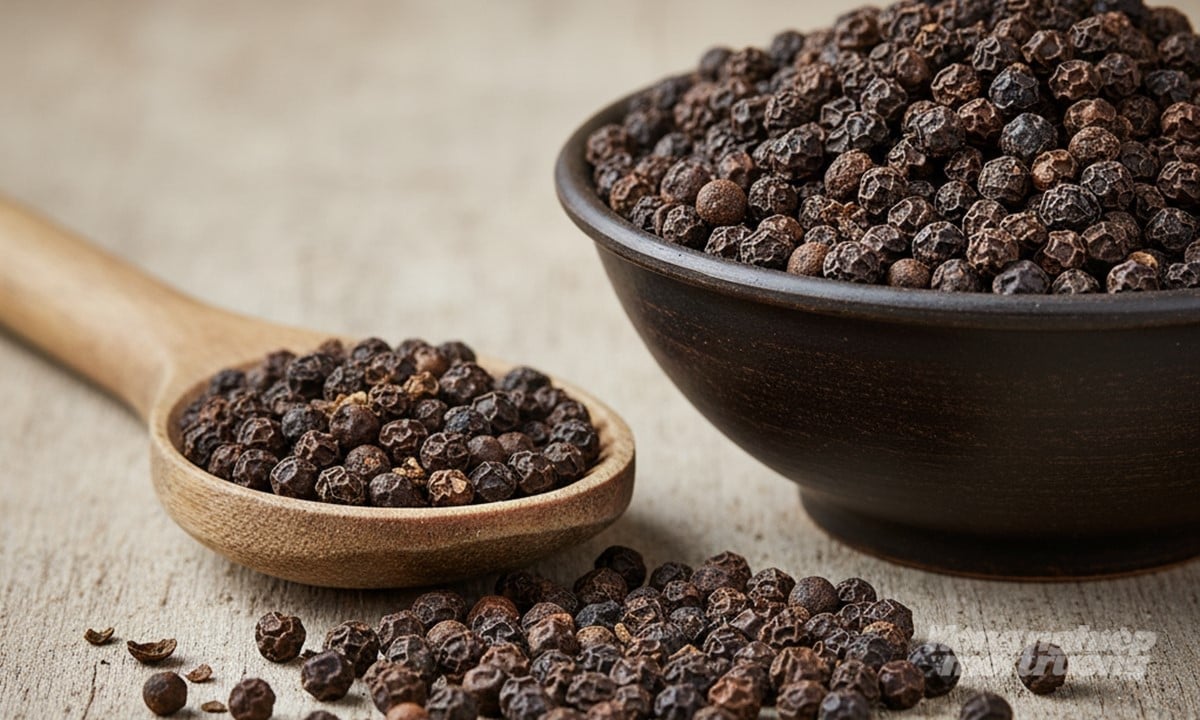

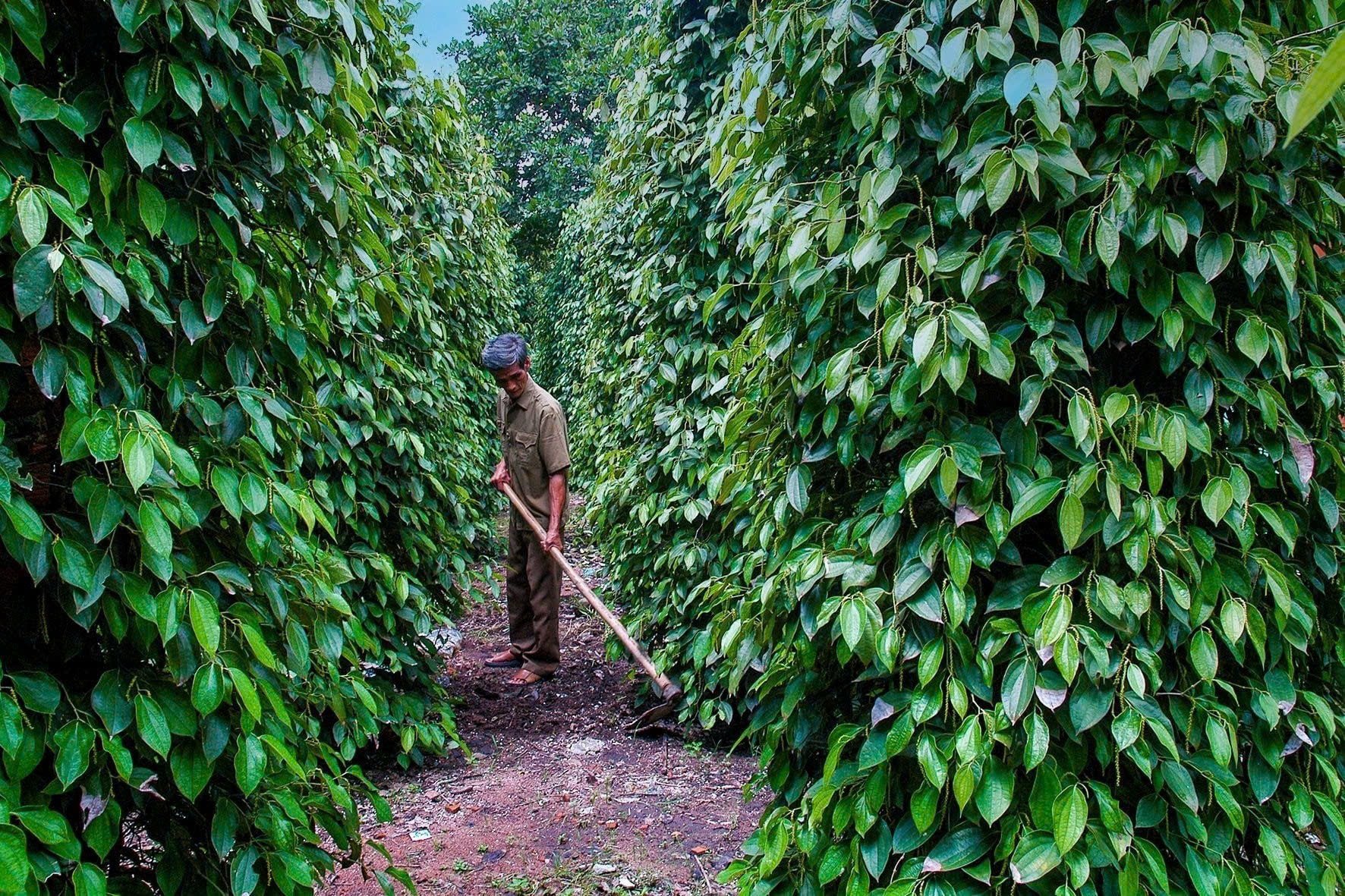
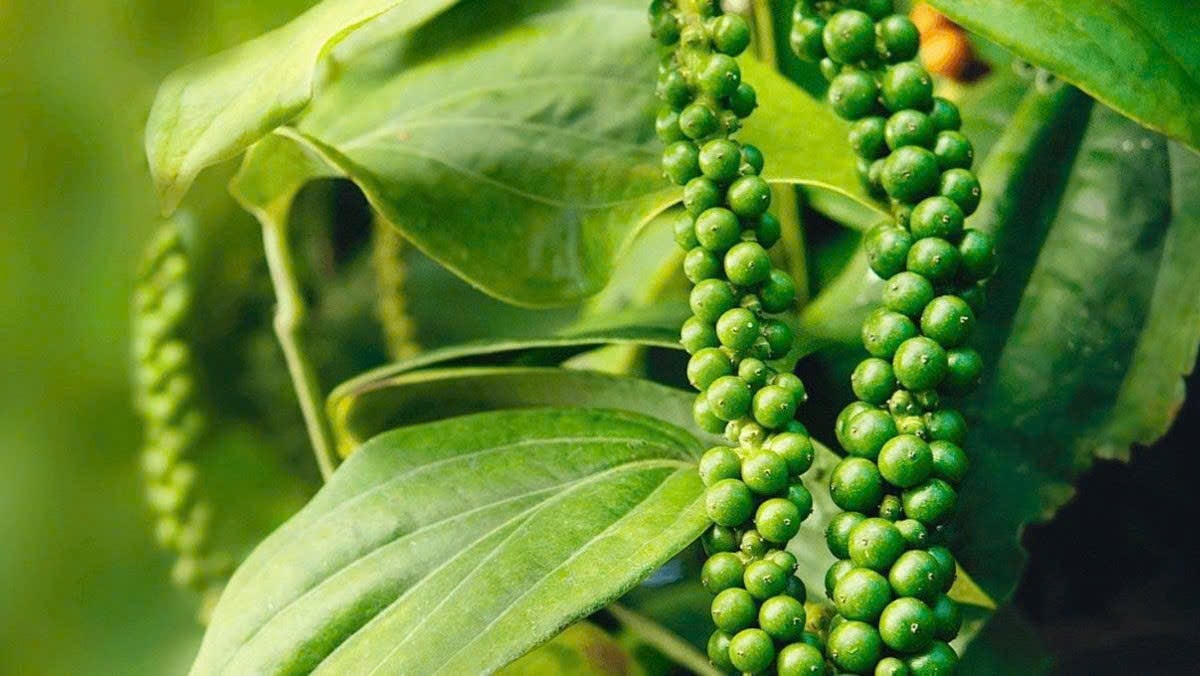
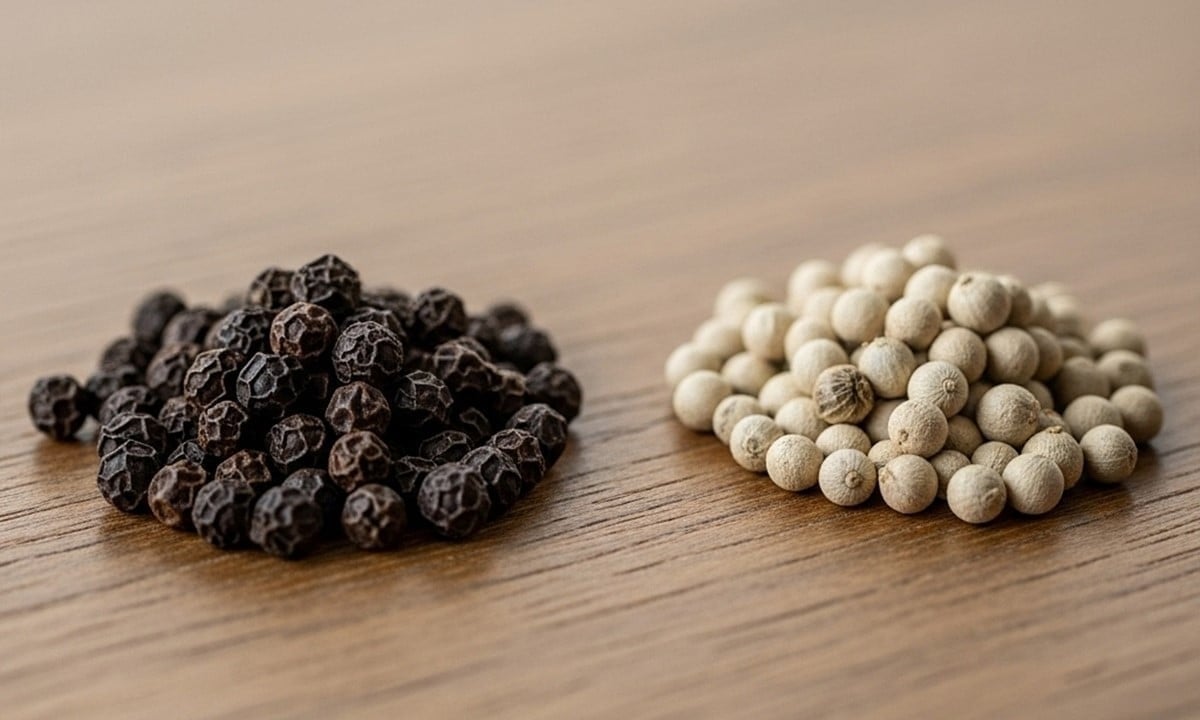

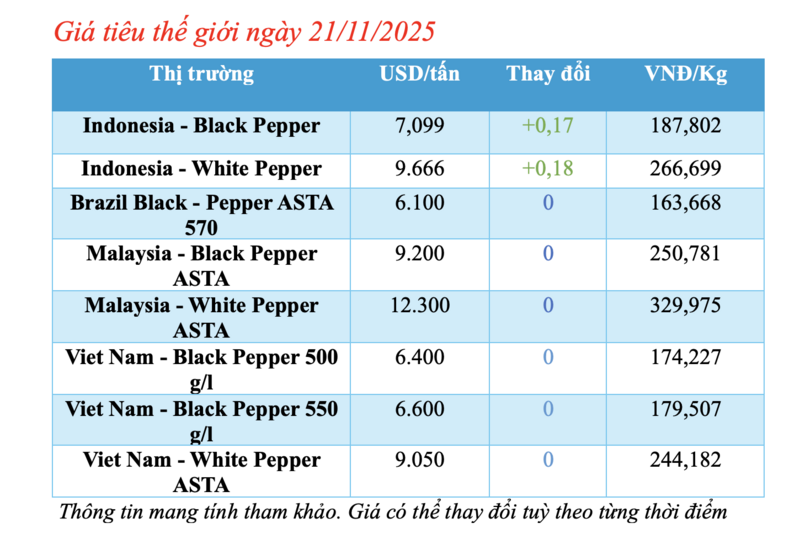
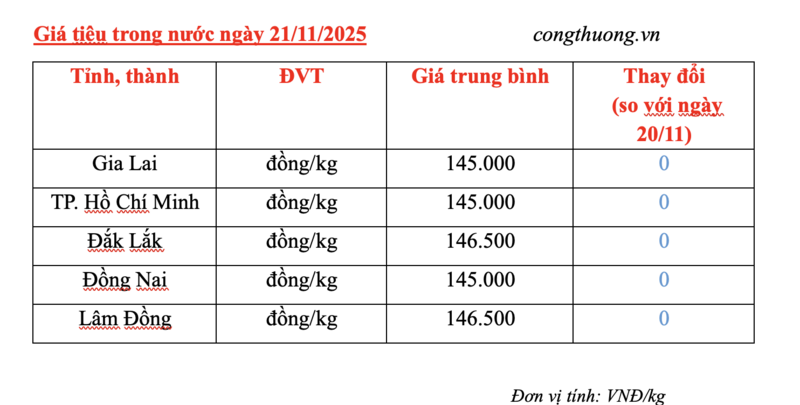
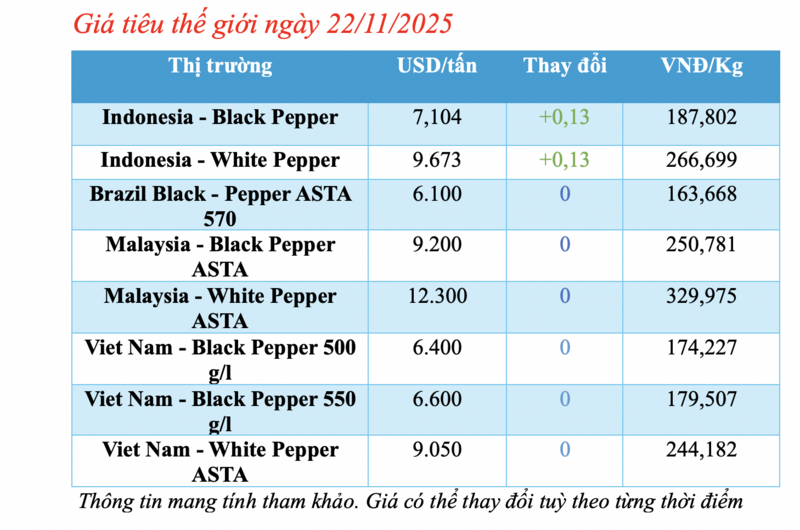
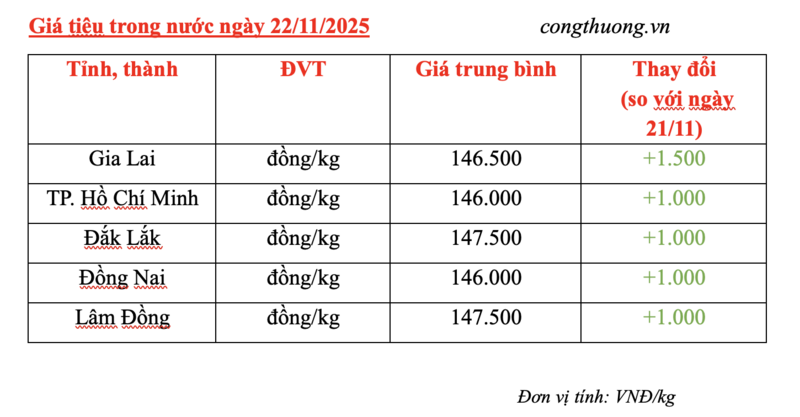
.jpg)


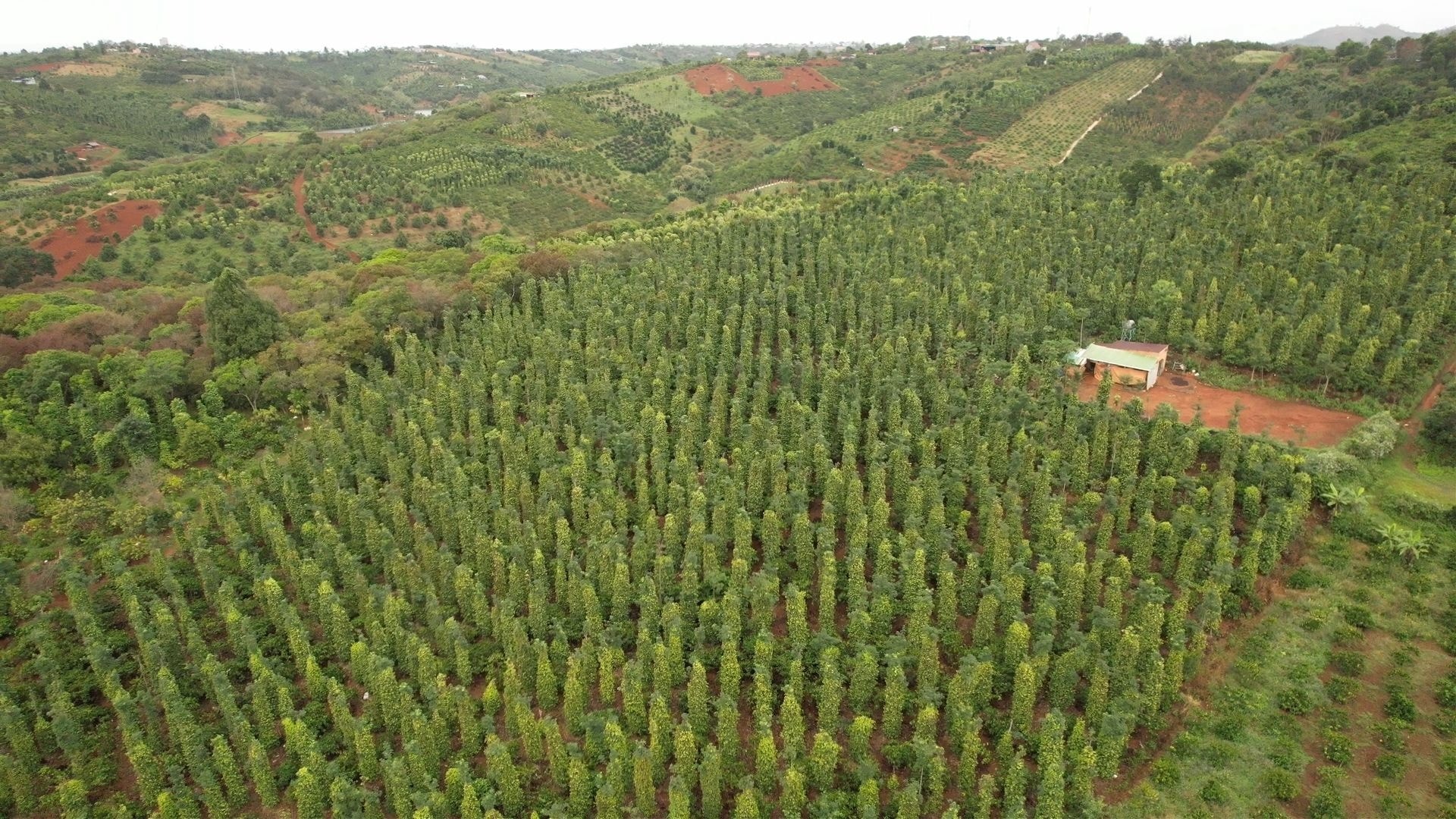



Comment (0)